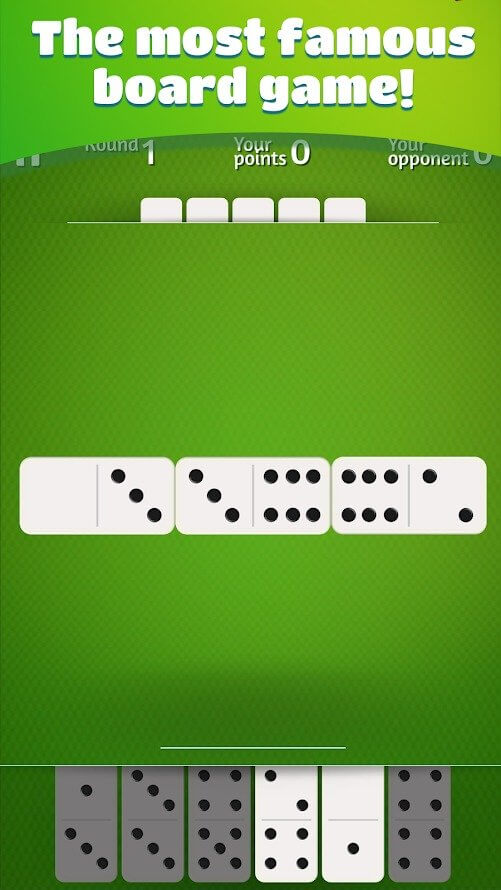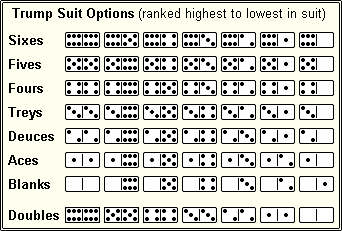

Dominos rules plus#
So for example if you have 59 on the board and play your last tile to create a total of 6 on the ends of the layout, you have scored 3 points - 2 for the total of 6 plus one for playing your last tile, and this is too many. If you play your last tile and this creates a scoring total, then for the purposes of ending the game, the point for chipping out is scored at the same time as the normal score for the play, and if this takes you over 61, the score is disregarded. For example if you score 4 points when your score is 58, your score remains at 58. A score that would take the player's or team's total over 61 is disregarded. The score is kept on a cribbage board, and the first player or team to reach exactly 61 wins. If the game is blocked, no one scores this point. For 20 you need and at the two ends.Ī player who chips out (in an individual game) or a team of which both members chip out scores one point for this.

So 15 is made by having the at one end and a five at the other or the at one end and a three at the other. Note that doubles score the total of their pips only if they are at an open end of the layout.


In the partnership game for four players, play continues until both players of one team have chipped out - so a game can be blocked even if only two players - one from each team - still have tiles. The play continues until one player dominoes or "chips out" (plays his last tile) or until all players are blocked. It is illegal to knock when able to play a tile. If a player cannot play a tile, he must knock, and it is the next player's turn. Doubles are turned crosswise and count as the total of their pips for scoring purposes. Each player in turn must play a tile if possible, adding it to one end of the layout, matching the inward end of the played tile with the outward end of the tile it touches in the usual way. The lead can be any tile in the player's hand. In the following hands, the turn to start passes to the left. The first player in the first hand is determined by lot - for example before the deal each player draws a tile and the one with the greatest number of pips starts. There is no drawing from the boneyard in Fives and Threes, so these tiles are out of play. The size of the hand varies with the number of players: A cribbage board is useful for scoring, since scores are totalled as they are made and not at the end of the hand. The game can be played by two to four players - four normally play two against two as partners. The game uses a standard set of Western double-six dominoes - 28 tiles in all. This page is based on information from Arthur Taylor's "Guiness Book of Traditional Pub Games (1992) and several other sources. It is also the game played in the British National Dominoes Championship, started by Keith Masters in 1985. It is a popular pub game in Britain, and is often played in pub leagues and tournaments. Now that you know the rules, how do you actually play the game? Head to the next page and find out.This game is a member of the Fives family, in which points are scored for making the ends of the layout add up to certain totals, in this case multiples of 3 and 5. Scoring is calculated after each tile is played by adding up the number of pips found on the open ends of all the tiles on the playing surface. In a points game, the first person to reach an agreed-upon winning score - usually 100 to 150 points - wins. The player whose turn it is can draw tiles from the boneyard until he or she comes up with a tile that has a playable number of pips. But in a draw game, the tiles in the boneyard become part of the game. In a draw game, the game ends similarly to a block game, with the first person playing their last tile proclaimed the winner. In a block game, the remaining tiles after the players draw their initial hand remain in the boneyard - the pile from which the players draw the tiles for their hands. Again, the number of tiles in a starting hand depends on the game, but in a four-player game using a standard 28-piece set, each player usually has five or six tiles per hand. In a block game, the game ends when the first person runs out of his or her original set of tiles, called a hand, as in poker. The rules governing how the game ends depend on whether you're playing a block, draw or points game.


 0 kommentar(er)
0 kommentar(er)
